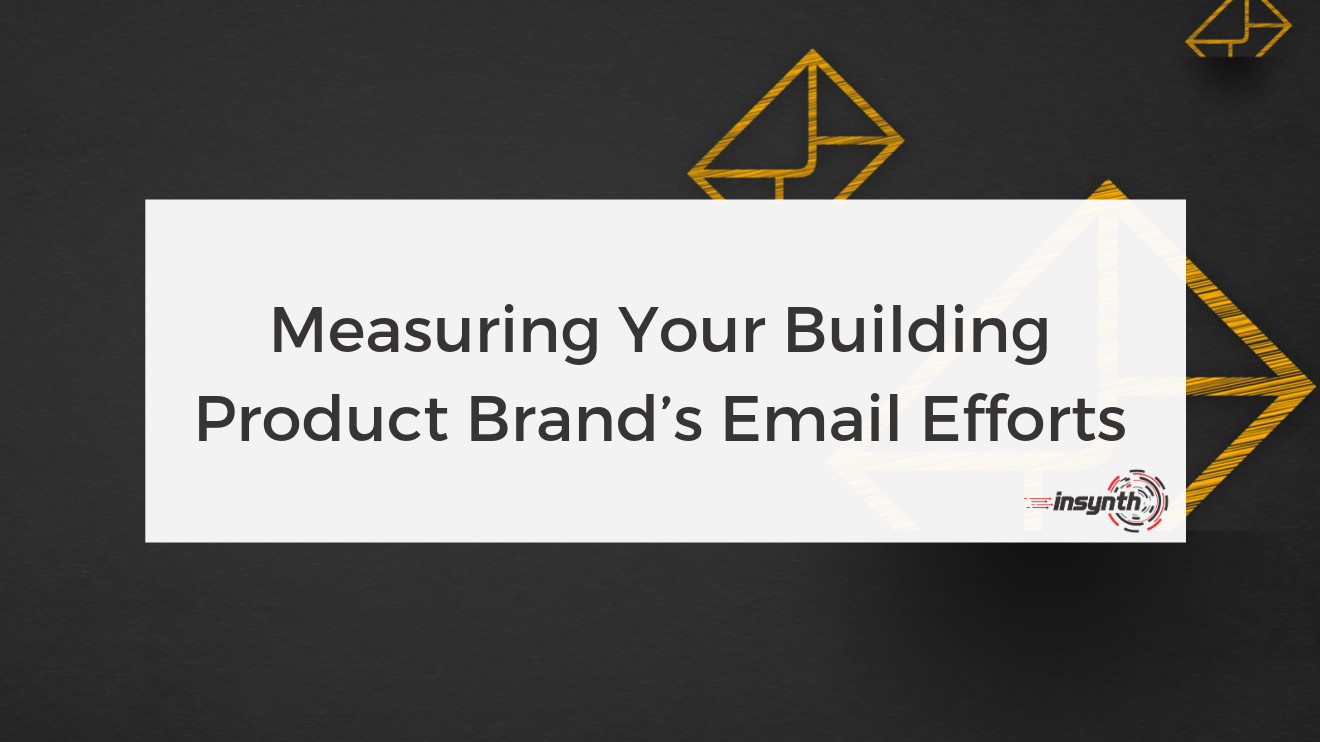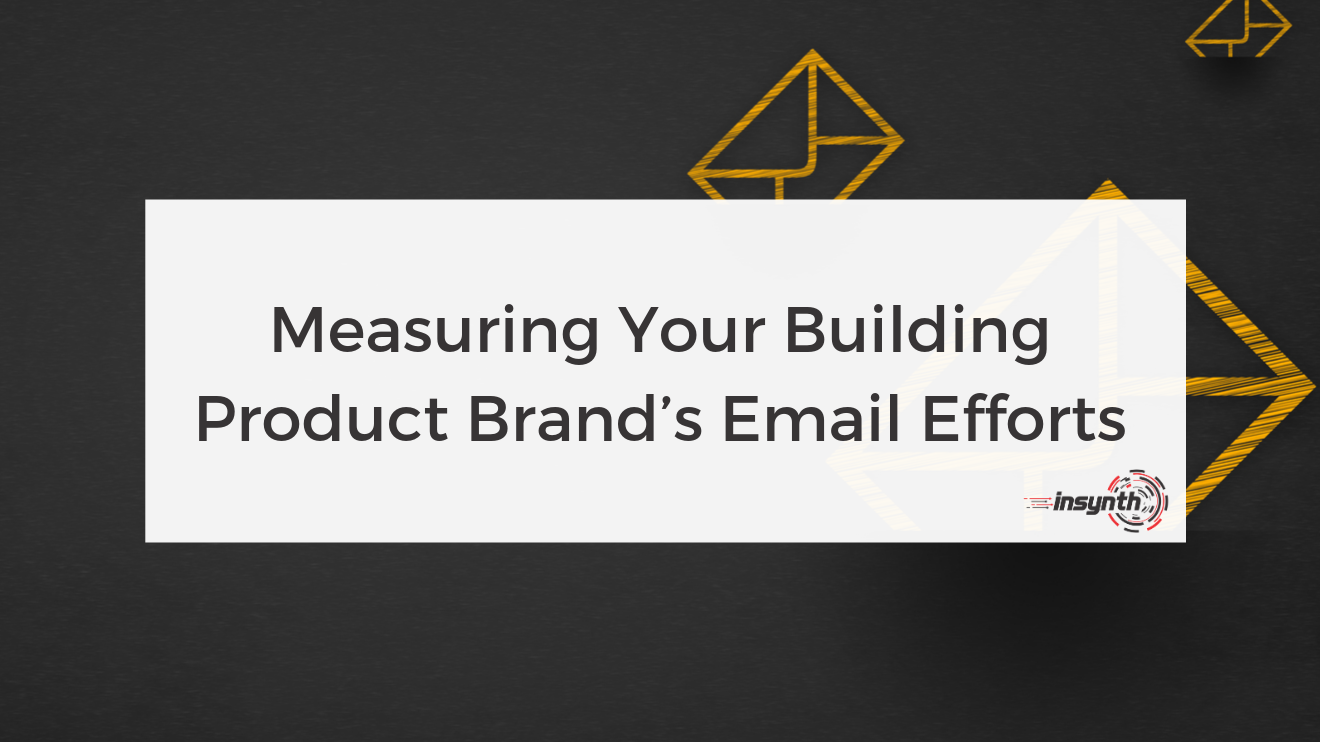3 min read
Measuring Your Building Products Brand’s Email Efforts
![]() Rich Newsome
:
16-Oct-2019 11:41:33
Rich Newsome
:
16-Oct-2019 11:41:33


As with every aspect of digital marketing, you need a process for tracking and measuring important metrics, and this is most definitely the case for your email marketing. After all, email continues to be one of the most important and effective marketing tactics.
We’ll aim to cover some of the key email metrics you should consider measuring. Bear in mind, however, that you’ll be measuring different metrics based on your individual goals.
And, of course, your goals will vary with your building products company over time.
Take note, because your sales team, managers and directors will want figures, return and results.
1. Clickthrough Rate (CTR)
CTR is normally expressed as a percentage. It represents the ratio of people who clicked on one or more of your links to the total number of people who opened your email.
CTR is great because it gives you instant insight as to how engaging your content is.
Here’s how you measure CTR:
[(# of users who clicked a link) ÷ (# of email opens)] x 100
2. Conversion Rate
A reader follows a link in your email: this is a conversion. Similar to CTR, it’s represented as a percentage.
So if the goal is to get readers to download your free e-book (in exchange for their email address), and 20 readers out of 100 fill out the form, your conversion rate would be 20%.
Here’s how you measure conversion rate:
(# of people who took a desired action) ÷ (# of emails opened)
Read More
- Different Kinds Of Email For Your Building Products Company
- Automating Emails For Your Building Products Company
- Growing Your Building Product Company’s Email List
3. Bounce Rate
If an email cannot be delivered, this is known as a bounce and can be distinguished as ‘hard’ or ‘soft’, depending on the circumstances.
A hard bounce is when an email has been returned to the sender because the recipient’s address is invalid. This could occur because the domain name doesn’t exist, or the recipient is unknown. It’s a common problem with purchased lists.
A soft bounce typically indicates a temporary delivery issue. It means that the email address was valid, and the email message reached the recipient’s mail server. However, there are some common reasons why it could have bounced back:
- The recipient’s mailbox was full
- The server was down
- The message was too large for the recipient’s inbox
Depending on your chosen email system, they may continue to attempt to send the messages for a period of time until the message is delivered.
4. List Growth Rate
Keeping on top of this metric is crucial as your marketing database will naturally degrade each year. This is common as people switch jobs, abandon old email addresses and unsubscribe.
Here’s how you measure list growth rate:
([ (# of new subscribers) – (# of unsubscribers + email/spam complaints)] ÷ Total # of email addresses on your list]) x 100
5. ROI (Return On Investment)
Firstly, you’ll need to calculate how much you spend on your email marketing. The most obvious expense is your email service provider. You also need to consider other expenses, like time spent on email marketing.
With that in mind, you’ll need to calculate the total amount of time each member of the team spends directly on email marketing and convert it into an hourly rate.
To find out how much money your company has made through email marketing, you can integrate with Google Analytics to track how many purchases have been made from a single email.
A/B Testing
In an A/B test, you can set up two variations of the one campaign and send them to a small percentage of your recipients. For example, you could send one HTML email and one plain text email and gauge which emails were most successful in terms of click-through rate, conversion rate, etc.
When it comes to A/B testing, you should be measuring just one variable, for example, open rates. If you’re coming up against low open rates, it could be that your subject lines need improving. An A/B test would be an effective way to test your approach to subject lines.
Conclusion
Email marketing is a great way to measure your marketing efforts. It provides you with valuable data to your marketing campaigns, proves insight into user activity and helps keep your team focused on the goals of the campaign.
If you need any support on delivering those all-important metrics for your building products and construction company, get in touch today.
About Insynth
As the only HubSpot certified agency to major on construction marketing, we bring together construction marketing strategy, digital strategy, website design, SEO, content marketing, email marketing, sales automation, marketing automation and HubSpot CRM implementation to produce successful campaigns and great results for our clients.
Book Your Free Consultation Today


